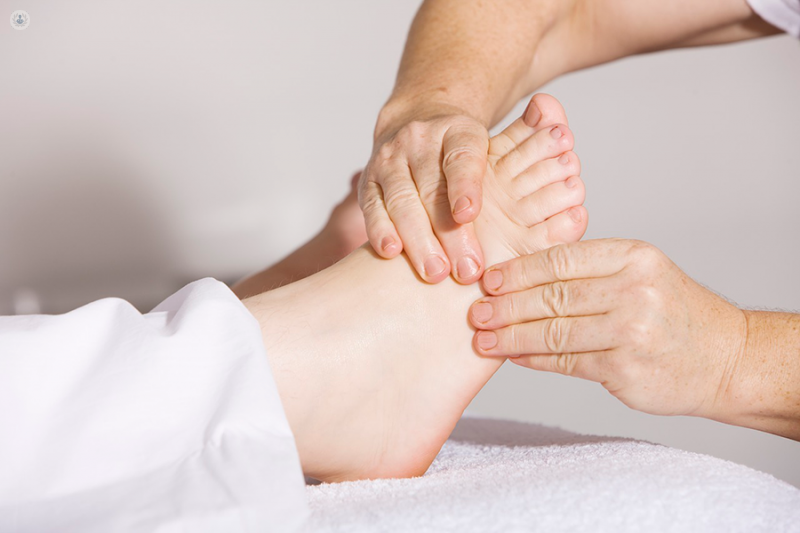Painful foot
Professor Rod Hughes - Rheumatology
Created on: 11-13-2012
Updated on: 09-14-2023
Edited by: Conor Lynch
What is foot pain?
Pain in the foot is an unpleasant sensation that can be felt anywhere on the foot, such as the arch, heel, ankle, or toes. Foot pain is a common problem but in the majority of cases can be treated at home.

What are the causes of foot pain?
There can are a range of conditions that foot pain could indicate, including:
- Bone injury or deformity – including, bone fractures, cavus foot, bunions, hammer toe, or flat foot
- Joint conditions – such as osteoarthritis or rheumatoid arthritis
- Nerve conditions – such as diabetic neuropathy or Morton’s neuroma
- Ligament damage – including sprain
- Tendon damage – such as plantar fasciitis
- Skin problems – such as corns and calluses
Risk factors which may predispose you to foot pain can include:
- Your age – problems such as bunions or fractures are more likely in older age
- Genetics – resulting in foot deformities from birth
- Being overweight – this can place more stress upon your feet or be associated with diabetes
- Poor footwear – including shoes that do not fit well or that do not have a lot of cushioning
- Engaging in sports such as running or hiking which can result in repeated stress on the feet
- Occupations which involve a lot of standing, walking or carrying
Can foot pain be prevented?
While you cannot prevent foot pain due to a foot deformity, you can take a number of steps to prevent foot injury or skin problems:
- Wear comfortable shoes that fit well. avoiding narrow toe shoes or regularly wearing high heels
- If you’re playing a sport, use suitable footwear that is adapted for the kind of impact your feet are going to make#
- If you’re getting back into a sport after a break, or starting a new one, gradually increase increasing the amount of exercise you do
- Warm up before any exercise and cool down afterwards
- Maintain a healthy weight
- Check your feet regularly for signs of skin problems
How is foot pain diagnosed?
A GP can diagnose a wide range of foot problems but may refer you for scans or specialist assessment if the diagnosis is uncertain.
In the UK, you can access foot specialists directly through dedicated podiatry clinics. As well as diagnosing the cause of your foot pain, a podiatrist can offer a wide range of treatments and advice on proper footwear. Podiatrists are sometimes known as chiropodists.
How is foot pain treated?
Treatment depends on the cause of the pain and can include:
- a splint or case to keep the foot stable while it heals
- removal of plantar warts or calluses
- orthopaedic shoes or insoles to provide better support while you walk
- advice on purchasing adapted footwear
- physiotherapy, including exercises and gait analysis to advise you on how to reduce foot strain
In some cases, surgery may be required to repair the bones, joints, or tendons in your foot. Foot surgery is carried out by an orthopaedic surgeon.







